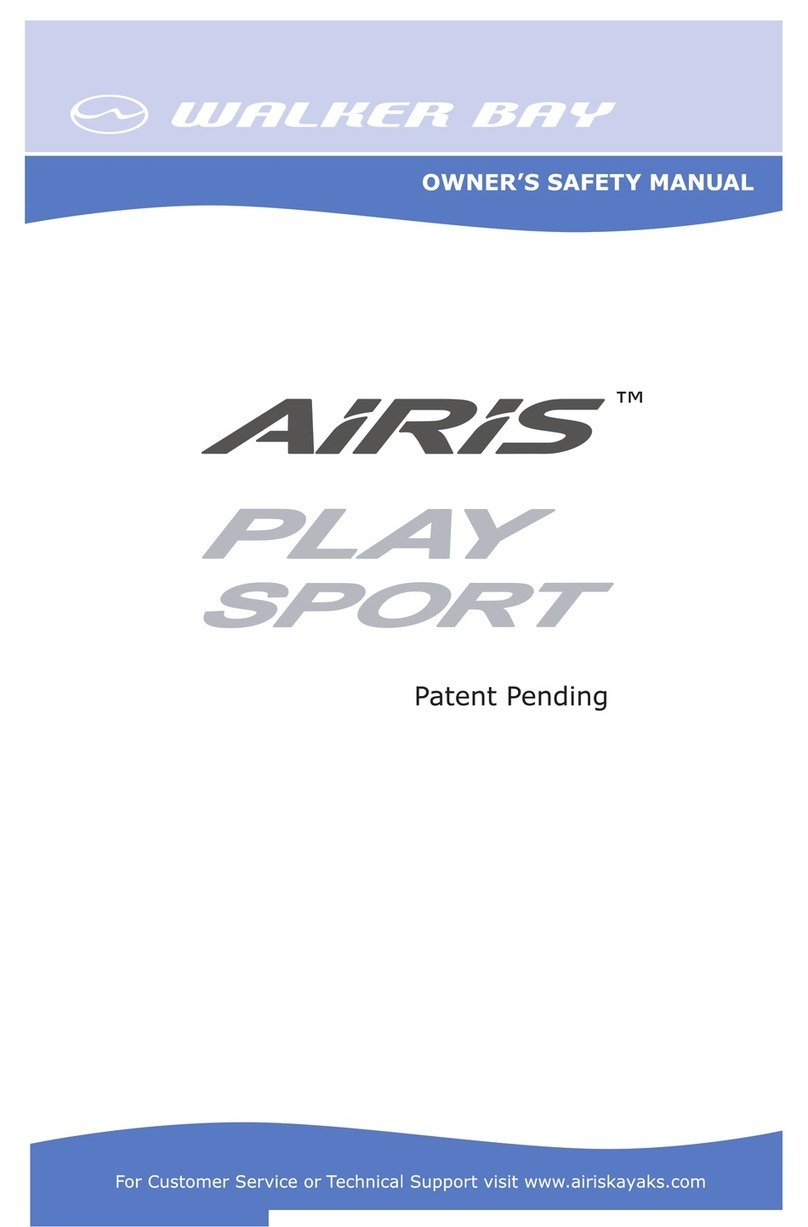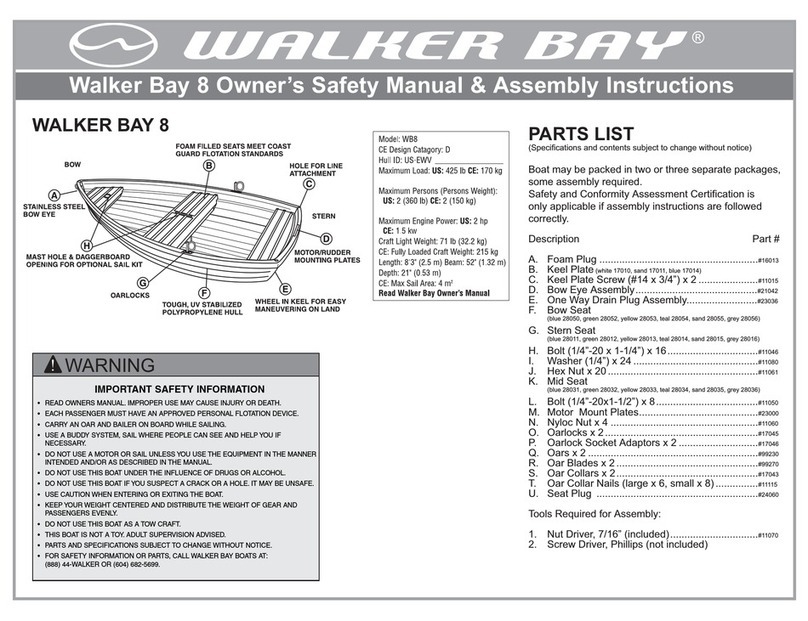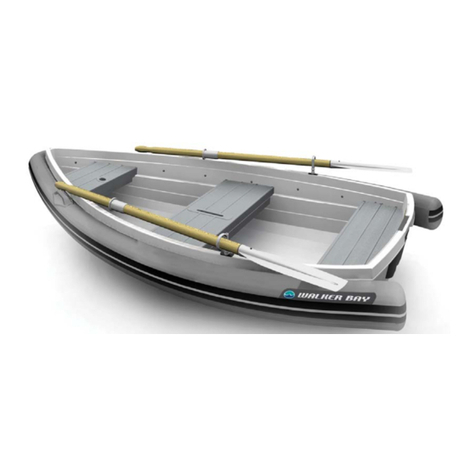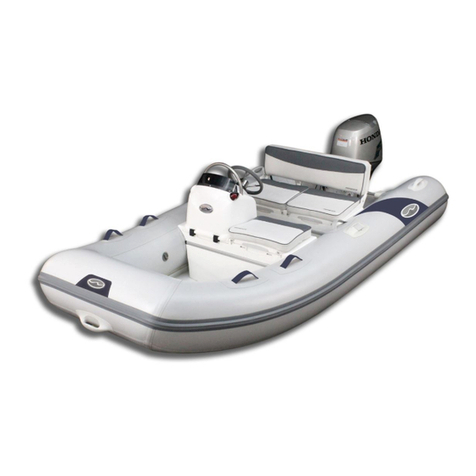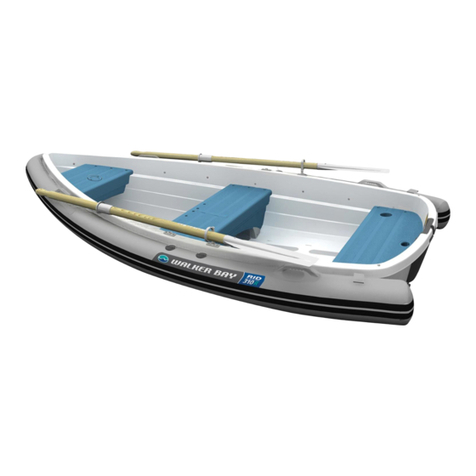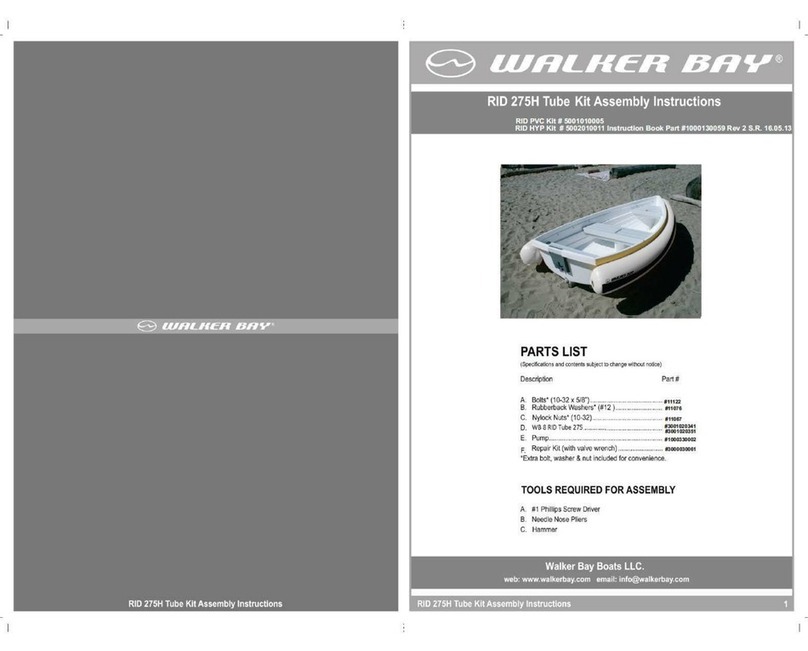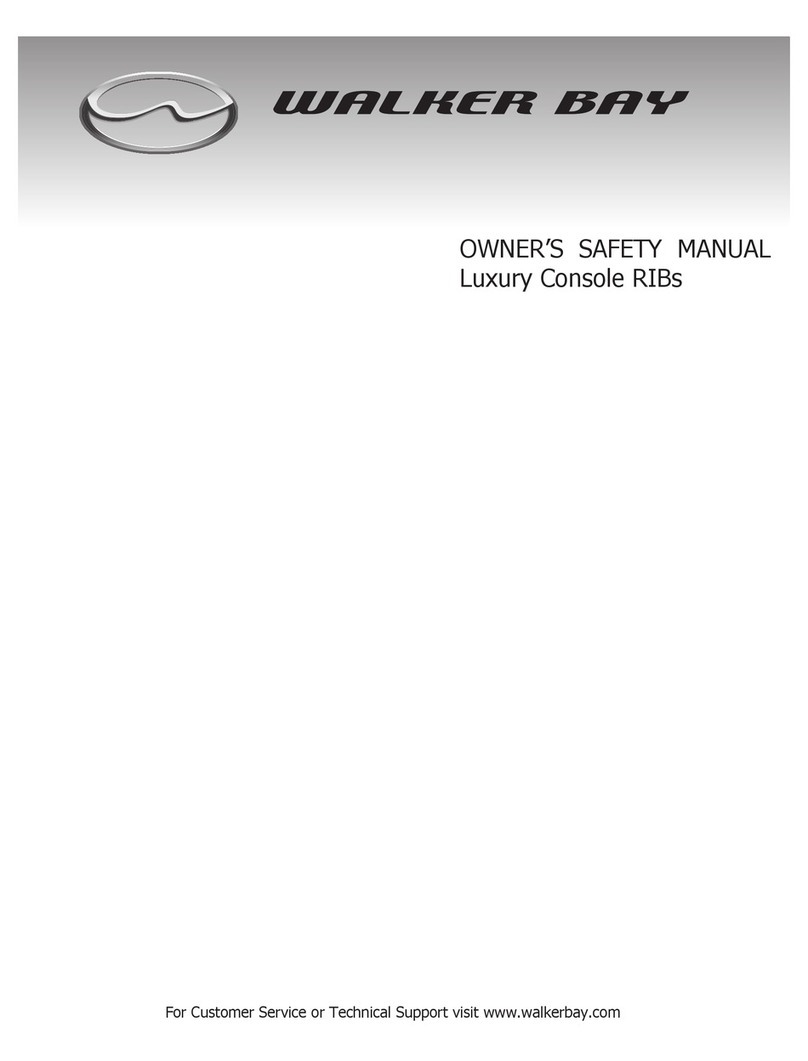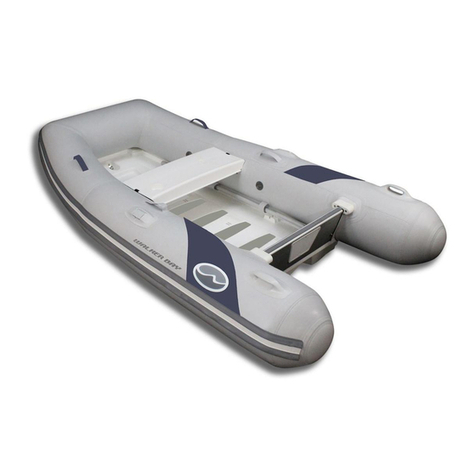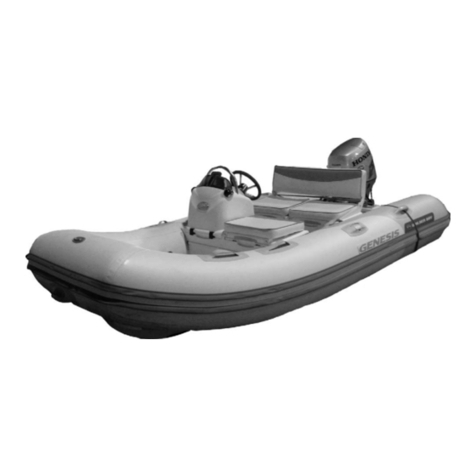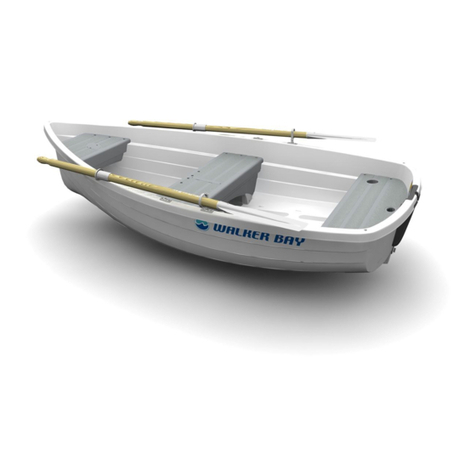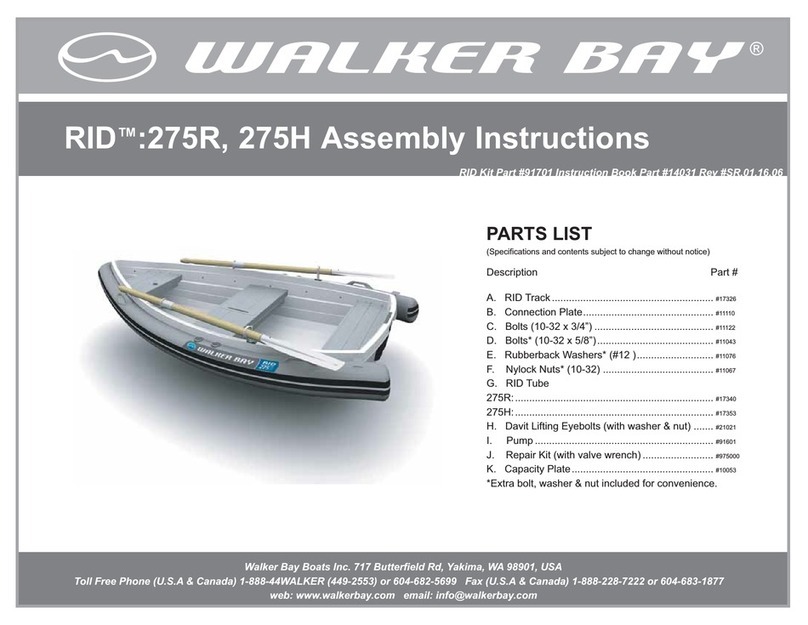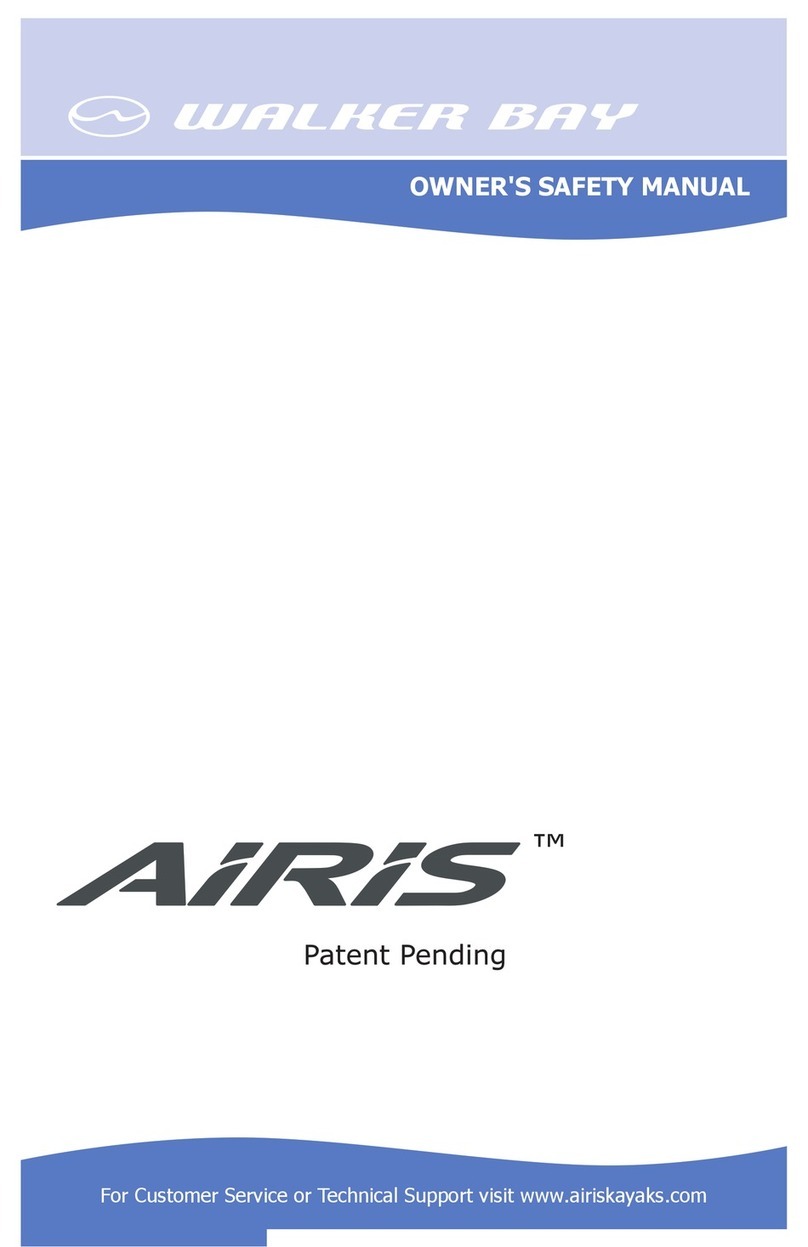4
INTRODUCTION
Congratulations on your purchase of a Generation Rigid Inflatable Boat (RIB) by Walker Bay! The Generation redefines
the benchmark in RIB luxury craft. With elegant European styling and a sporty wide-body frame, this boat is sure to
exceed your expectations in comfort and performance. A precisely constructed deep-V fiberglass hull provides a smooth
ride, facilitates early planing and prevents potential issues of cavitation, while the spacious interior of the wide-body hull
affords ample space for cargo and crew. Every Generation RIB is backed by a 5-year limited hull warranty and a 10-year
limited warranty on the ORCA CSM tubes.
Welcome to the next Generation of luxury RIBs!
ABOUT THE OWNER’S MANUAL
This manual has been compiled to help you to operate your craft with safety and pleasure. It contains details of the craft;
the equipment supplied or fitted, its systems and information on their operation. Please read it carefully and familiarize
yourself with the craft before using it.
This Owner’s Safety Manual is not a course on boating safety or seamanship. If this is your first craft or inflatable, or if
you are changing to a type of craft you are not familiar with, for your own comfort and safety, please ensure that you
obtain handling and operating experience before “assuming command” of the craft. Your dealer or national boating/sailing
federation or yacht club will be pleased to advise you of local sea schools or competent instructors.
Ensure that the anticipated wind and sea conditions will correspond to the design category of your craft (see DESIGN
CATEGORIES) and that you and your crew are able to handle the craft in these conditions. Even when your boat is
categorized for them, the sea and wind conditions corresponding to the design categories A, B, and C range from severe
storm conditions for category A, to strong conditions for the top of category C, open to the hazards of a freak wave or
gust. These are therefore dangerous conditions, where only a competent, fit and trained crew using a well maintained
craft can satisfactorily operate.
This Owner’s Safety Manual is not a detailed maintenance or trouble-shooting guide. In case of difficulty, contact Walker
Bay or its national representatives.
Always use trained and competent people for maintenance, fixing or modifications. Modifications that may affect the
safety of the craft must be assessed, executed and documented by competent people. Walker Bay or its representative
cannot be held responsible for modifications that Walker Bay® has not approved. Modifications or attachment of items to
the hull or tube may affect your warranty (see LIMITED WARRANTY).
In some countries a driving license, boating license, certification, or authorization are required, or specific regulations are
in force for operating a marine craft. Check with your local boating safety office.
Always maintain your craft properly and make allowances for the deterioration that will occur over time and as a result
of heavy use or misuse of the craft. Any craft, no matter how strong it may be, can be severely damaged if not used
properly. This is not compatible with safe boating (see OPERATOR INSTRUCTIONS). Always adjust the speed and
direction of the craft to sea conditions.
The craft should have onboard the appropriate safety equipment (see SAFETY EQUIPMENT) according to the type of craft,
weather conditions etc. This equipment is mandatory in some countries. The crew should be familiar with the use of all
safety equipment and emergency maneuvering (see SAFETY EQUIPMENT & EMERGENCY PROCEDURES). Contact your
local boating/sailing organization for information, lessons or drill sessions.
All persons should wear a suitable Coast Guard approved buoyancy aid (life jacket/personal floatation device). Note that
in some countries, it is a legal requirement to wear a buoyancy aid that complies with their national regulations at all
times.
PLEASE KEEP THIS OWNER’S MANUAL AND YOUR MSO IN A SECURE PLACE AND HAND IT OVER TO THE NEW OWNER
WHEN YOU SELL THE CRAFT.
